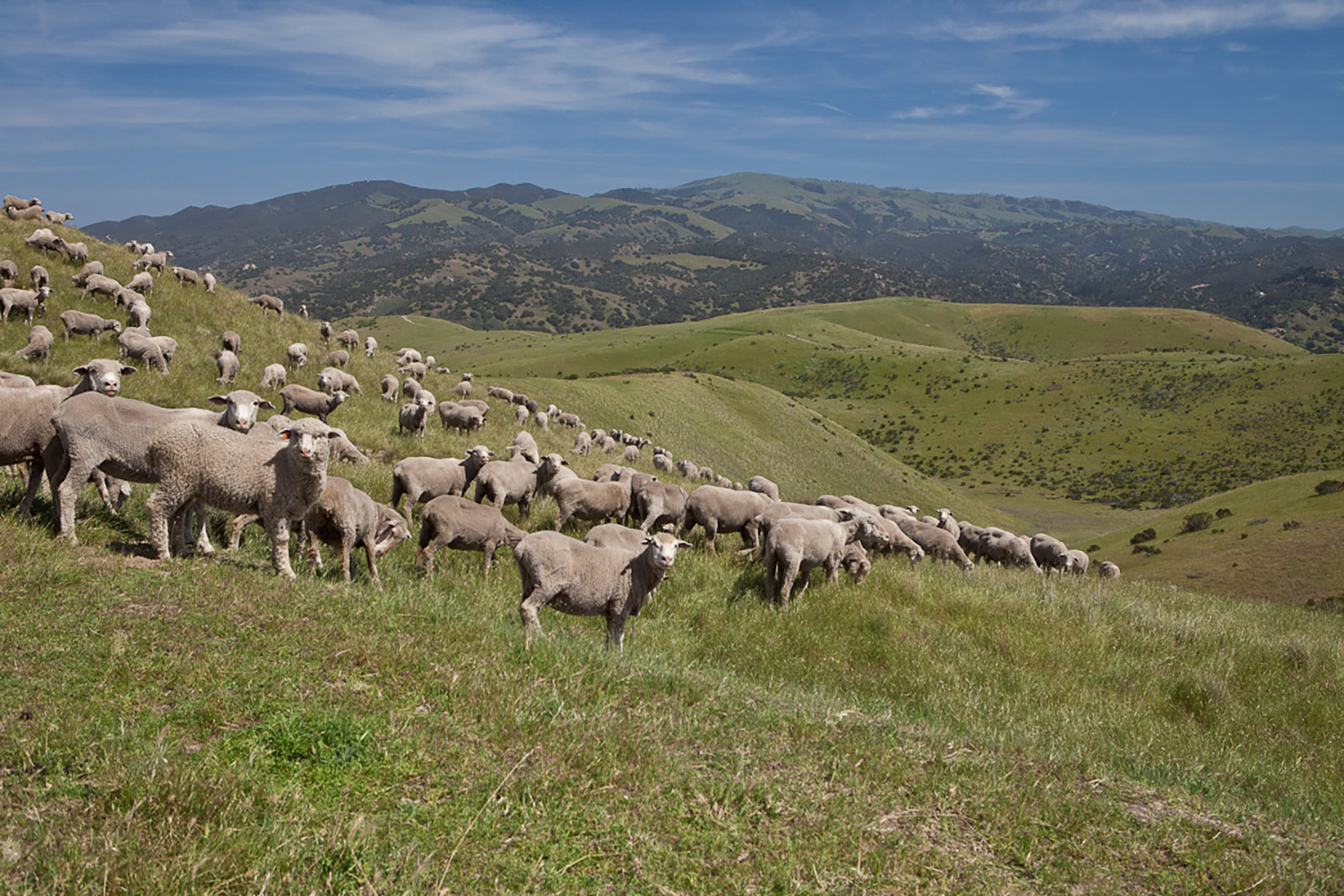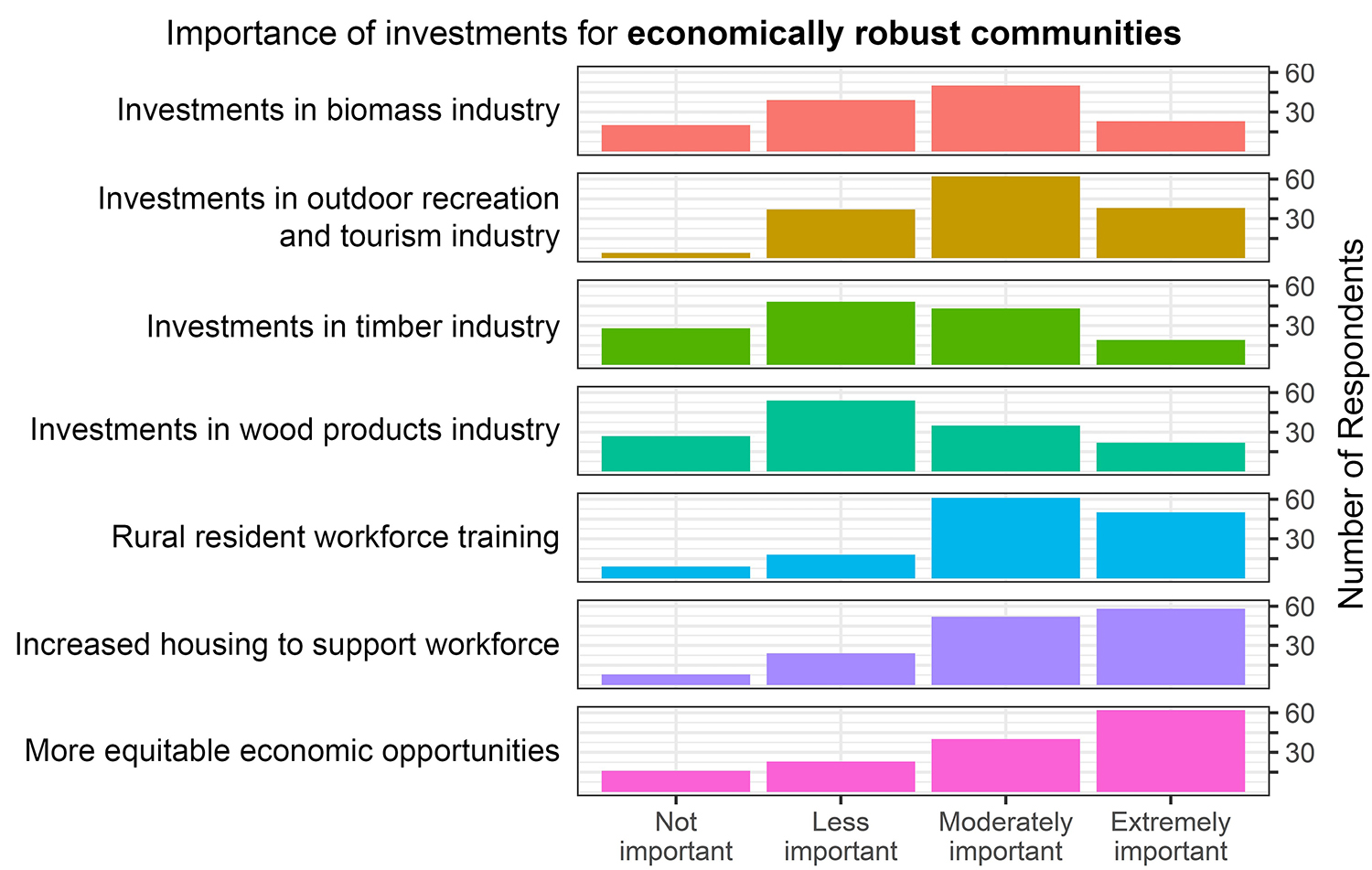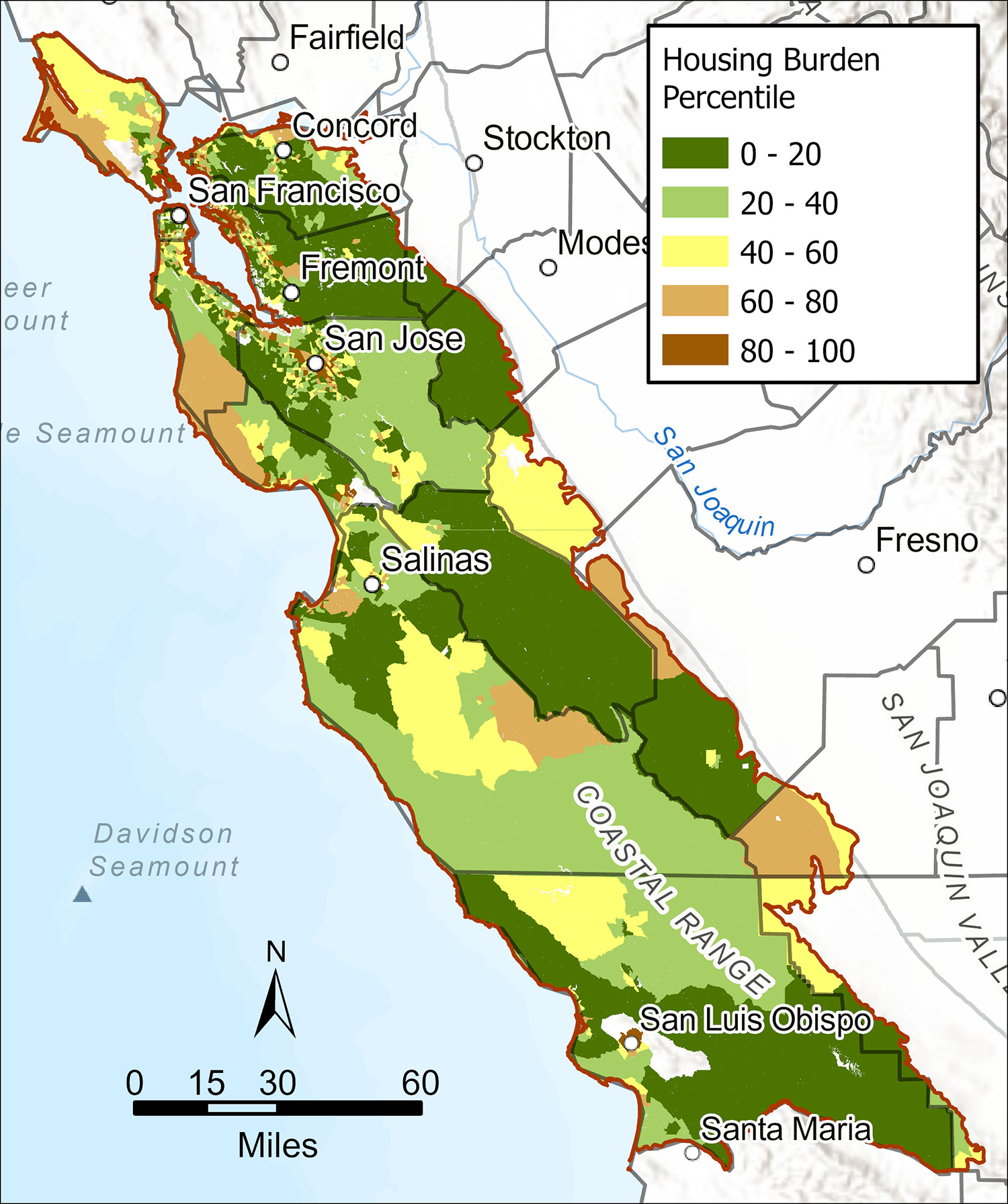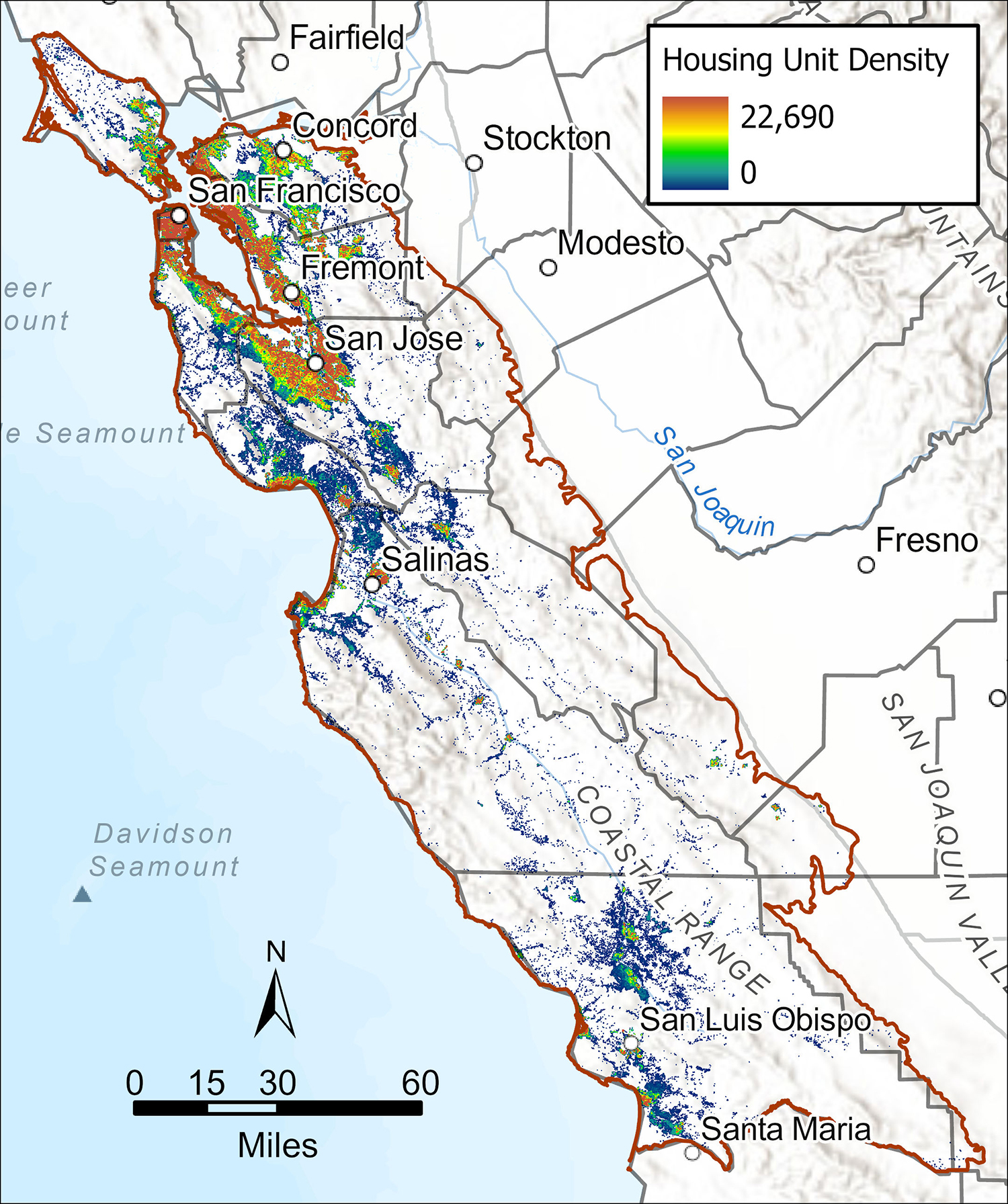Central Coast Regional Profile
Economically-Robust Communities

Photo credit: Bob Wick, BLM
Overview
Wildfires can have enormous economic impacts for homeowners, communities, and the state. The August 2020 CZU Lightning Complex fire, which burned 86,509 acres and damaged 1,490 structures, provides a recent example of some of these costs. This incident alone cost $68 million in firefighting costs and $2.5 billion in estimated insured losses. In addition to razing more than 900 homes, the fire also critically damaged infrastructure, including roads, septic and storm drainage systems, water distribution systems and other essential public utilities.
Afterward, many residents could not afford to rebuild because permitting processes and complying with updated building codes were time-consuming and more expensive than the damage covered by insurance. Santa Cruz County waived many permitting fees for CZU fire survivors to facilitate recovery, but the average cost for permitting a 1500-square-foot home was still nearly $11,000. Over a year after the fire, less than 10% of property owners who had lost their homes had received permission to begin rebuilding. Many former community members left burned rural areas for the city or moved out of Santa Cruz County entirely. This has resulted in a loss of local businesses and critical workforce. Lack of available housing for workers has made it additionally hard for surviving businesses to recover.
The smoke impacts of wildfire can also have far-reaching impacts for key industries in the region, including agriculture and tourism, which are economically important and susceptible to wildfire. Even if fields and rangelands are not burned, smoke can impact crops. For example, smoke can taint grapes that are on the vine and can result in total crop loss. The public health hazards of smoke can also make it unsafe for outdoor workers to perform time-sensitive agricultural work. Smoky conditions and road or business closures caused by wildfires can also deter tourists from visiting the region.
The costs of wildfire mitigation activities are also higher in the Central Coast region than many other areas. High costs of living in the San Francisco Bay Area and other cities of the Central Coast where affordable housing is limited require higher wages to sustain a workforce than less expensive areas. Fuel reduction work is also more expensive in areas where there is limited forest product processing capacity. The Central Coast region has less of a remaining timber industry than the Sierra Nevada and North Coast regions. A few timber companies persist in the Santa Cruz Mountains area, and Big Creek Lumber runs the only remaining redwood sawmill on the Central Coast. However, Big Creek Lumber has been strictly doing salvage logging since the CZU Lightning Complex fire, and it is not economical to process any wood besides redwood in the region. There is nowhere to take the Douglas fir wood that burned or biomass from other vegetation treatments.
Local and regional efforts are developing alternative solutions to deal with the biomass from fuel reduction work that will reduce the costs and public health impacts of these projects. For example, regional parks and open space districts are using technology such as carbonators and curtain burners to burn biomass on site with very little resulting smoke, rather than trucking it to faraway facilities. Growing the market for biochar production may provide an additional way to offset the costs of vegetation management treatments while simultaneously storing carbon back into soil [see ‘Carbon Storage’].
Land managers are also considering ways to apply prescribed grazing for wildfire hazard reduction and ecological goals. Livestock grazing is not compatible with all habitats, and there are concerns that poorly planned grazing has historically impacted native ecosystems. However, prescribed, or targeted, grazing entails using a specific type of livestock at a determined season, duration, and intensity to accomplish management goals. Researchers and land managers are working to understand how prescribed grazing can be strategically applied to achieve multiple co-benefits, such as restoring native habitat for biodiversity and reducing fuel loads. Expanding grazing operations for fuel reduction would require additional support for necessary infrastructure, like road maintenance, fencing, and water for the animals.
Stakeholder Perspectives

Stakeholders considered increased housing to support workforce, rural resident workforce training, and more equitable economic opportunities to be on average moderately important for achieving economically robust communities. Investments in timber industry and wood products industry were considered to be the least important of potential areas of investment.
Interview findings: Many interviewees described workforce retention and development as a key challenge for increasing wildfire resilience. There is limited skilled workforce for land management work because the high cost of living and lack of affordable housing on the Central Coast makes it hard to retain and attract people to work in the region when they could make the same salary somewhere less expensive. Interviewees noted that the costs of doing work in the Central Coast are also much higher than other parts of the state because of the lack of capacity to process removed biomass, including salvaged trees, and working close to the built environment increases project costs such as traffic control. Many organizations are using responsibly-managed grazing to promote native habitat restoration while reducing fuels, including in steep areas that mechanical treatments cannot access. However, it is difficult to fund conservation grazing and regional capacity is currently limited.
Resource Conditions


Housing burden (top) reflects the percent of households in a census tract that are both low income and pay greater than 50% of their income to housing costs. In mapping this metric, census tracts are represented by their percentile score in relation to other census tracts across California. Areas with a higher percentile score have a higher percentage of households experiencing housing burden relative to other census tracts in California. Housing unit density (bottom) in this region is extremely concentrated in the Bay Area and in coastal cities such as Santa Cruz and Monterey. However, there are large swathes of the region with very low, or even nonexistent, housing. Together, these metrics illustrate a critical issue for the Central Coast region; lack of affordable housing is frequently identified as a major barrier to increasing and sustaining workforce development for wildfire resilience projects (see Stakeholder Perspectives section).
